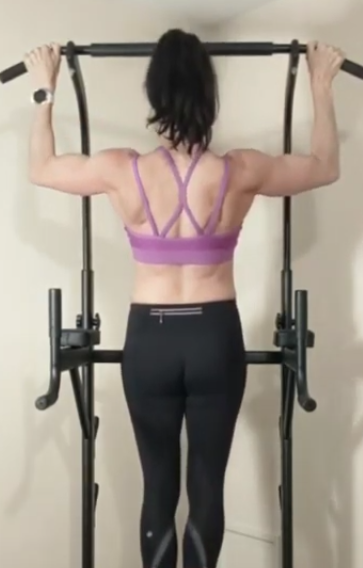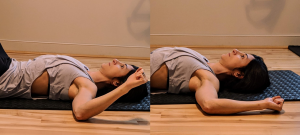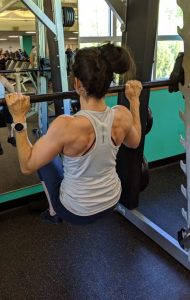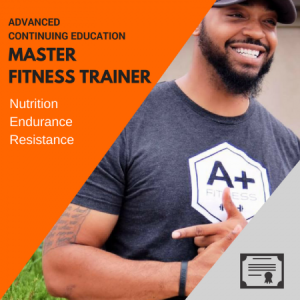
The execution of a perfect pull-up is the paragon of upper body strength and should be a goal for every personal training client and fitness enthusiast. Many people get stalled out on a weight assistance pull-up machine, never able to go it solo, while others force the movement with poor form and execution, setting themselves up for injury or the failure to progress. Still others get hooked on the pull-up’s favorite cousin, a chin-up, which is also a great exercise for upper body strength, but slightly easier to execute given the stronger bicep recruitment.
Shoulder Mobility Assessments

The first step before moving forward with attempting bodyweight pull-ups is to do movement assessments in order to determine if any mobility restrictions will hinder the process. Mobility is often eschewed in favor of aggressive pursuits of goals, usually ending badly with an injury at worst or frustration at best.
The three areas that need to be observed and assessed to execute proper pull-ups are lat length and thoracic mobility, scapulae rotation restrictions, and degree of internal versus external rotation at the glenohumeral joint.
Corrective Exercise to Improve Shoulder Joint Mobility
 Once the trainer has determined which, if any (and spoiler: pretty much everyone will have some issue in one of these areas), he or she can move forward with correcting the imbalance. There are specific movements one can do to improve mobility of the thoracic spine and lengthen the lats such as thoracic mobilizations over a foam roller.
Once the trainer has determined which, if any (and spoiler: pretty much everyone will have some issue in one of these areas), he or she can move forward with correcting the imbalance. There are specific movements one can do to improve mobility of the thoracic spine and lengthen the lats such as thoracic mobilizations over a foam roller.
Understanding scapular upward and downward rotation is tricky, but getting a good handle on it is a valuable tool for every personal trainer trying to teach their clients how to do pull-ups. Improving the performance of the scapular upward and downward rotators like the lower trapezius without involving the pec minor require specific cueing.
Finally, since most people have to improve limited external rotation in the shoulder joint, and instead, tend to be more internally rotated, steps can be taken to lengthen muscles like the teres major and pecs and strengthen the infraspinatus and teres minor.
Perfect Pull-up Regressions
 Once you’ve got that mobility all straightened out, you can begin to program exercises that both build strength and endurance at the right tempo and inspire confidence in the client to achieve the perfect pull-up.
Once you’ve got that mobility all straightened out, you can begin to program exercises that both build strength and endurance at the right tempo and inspire confidence in the client to achieve the perfect pull-up.
Starting with grip strength and working up through progressive strengthening exercises like isometric holds, negatives and assisted pull-ups will set up your client for learning how to do a strict pull-up.
There are few exercises more empowering and satisfying than pull-ups. Naturally, you should practice what you preach and learn to do pull-ups as a personal trainer if you don’t already! Then once you can demonstrate a perfect pull-up, inspire your clients to get on board with conquering this impressive feat of strength and marker of general fitness.







